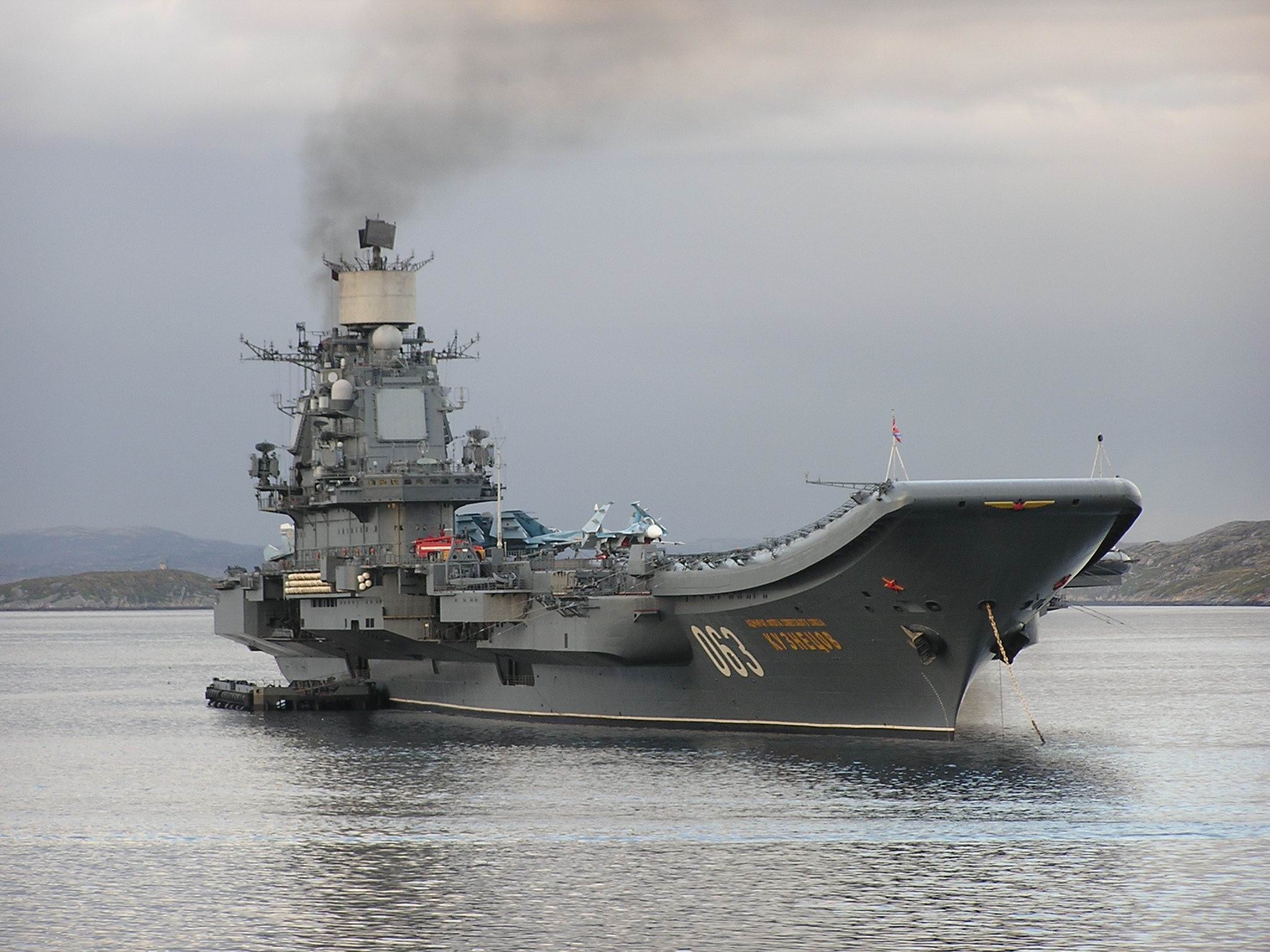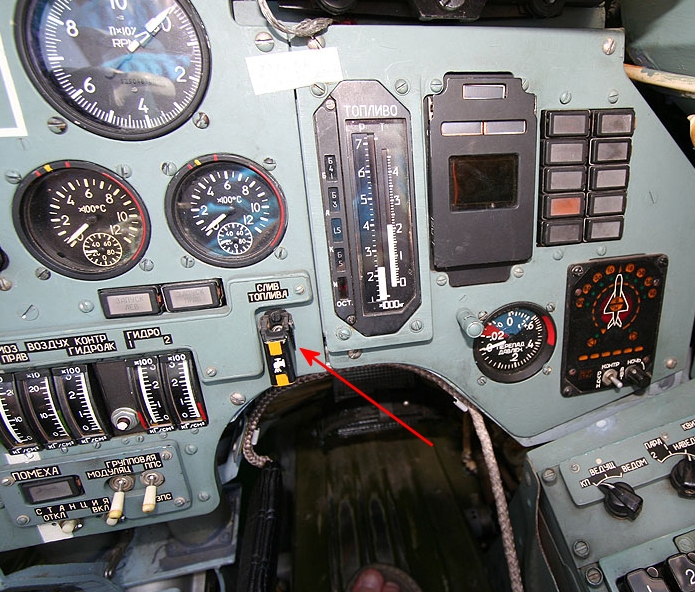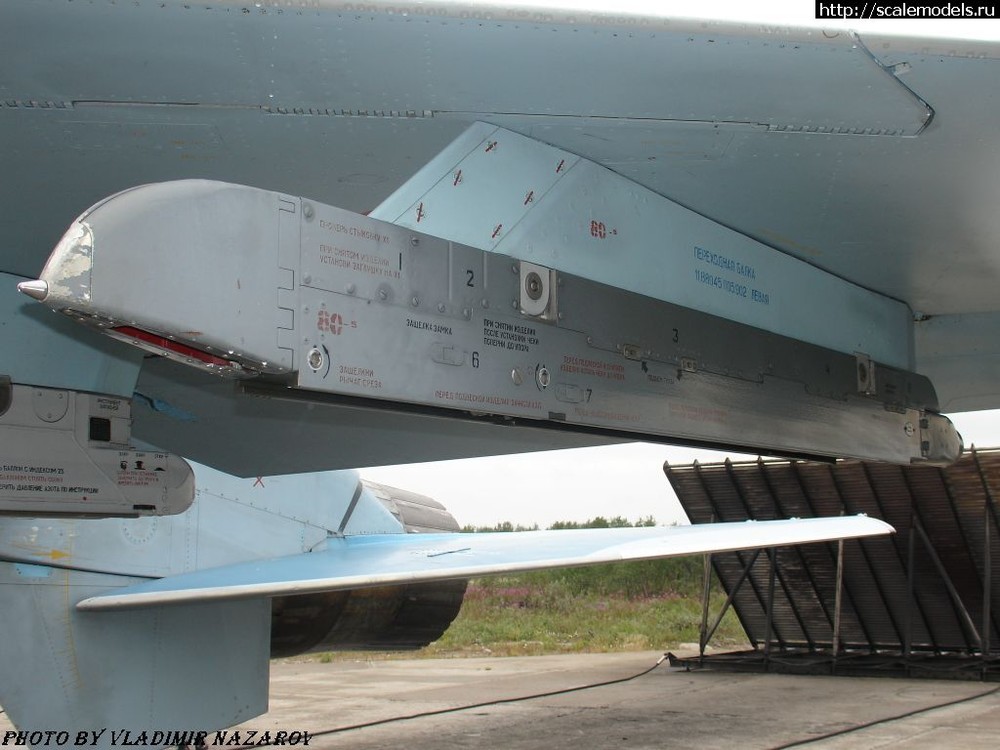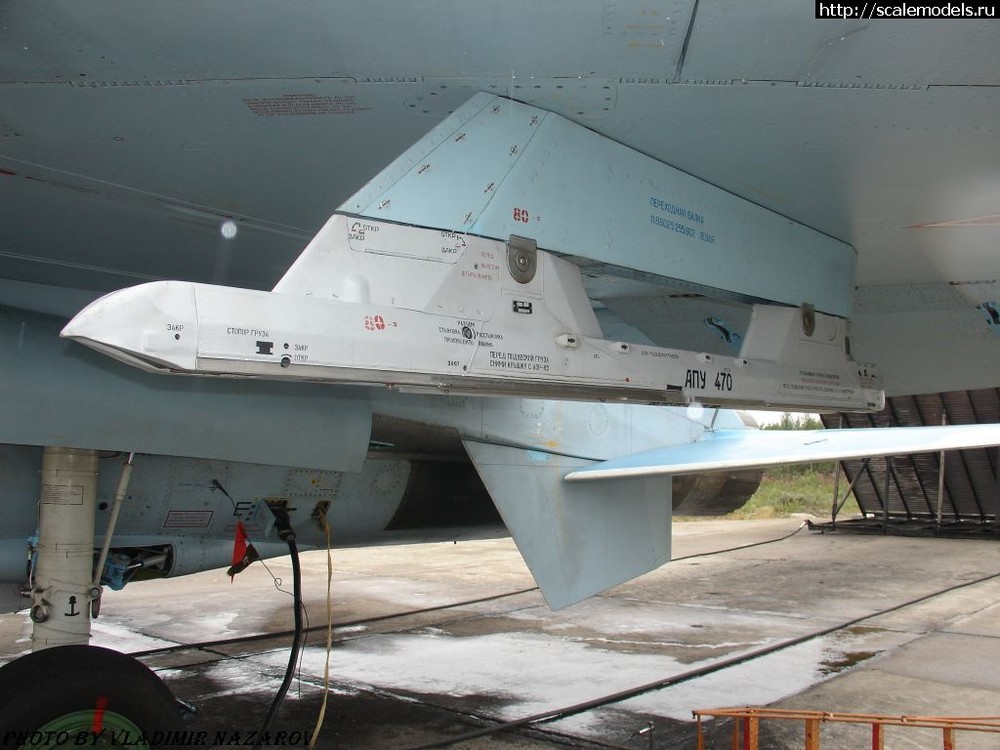-
Posts
4989 -
Joined
-
Last visited
-
Days Won
11
Content Type
Profiles
Forums
Events
Everything posted by Alfa
-
G-limit of +4 /-1.5 when feeding - none when empty. Speed restriction of M1.5 when carrying CL tank regardless of full/empty(drag issue).
-
Or rather - the "MiG-29A" doesn't have one, while the MiG-29S has.....not as pronounced as on the -SMT, but its there :)
-
Don't know. Not a theory - they do. The "G" is an "A" with minor cockpit instrument modifications(for NATO compliance). Yes it does, but thats not relevant to PFM - it has the same aerodynamics and control surfaces. But the MiG-29S has a modified flight control system, which would affect PFM.
-
The legacy Hornet(A, B, C, D) don't have this ability(carrying a buddy pack) - only the Super Hornet.
-
Yes. Yes it does - see attachment. Yes the Su-33 is compatible with the UPAZ-1K "buddy-refuelling" aggregate. As Auditor said, fuel draining is implemented for both the Su-27 and Su-33. Buddy refuelling isn't, but might be in the future.....seem to remember Chizh saying something about it being planned.
-
That sounds plausible - in the specs for the RVV-MD they make the distinction between target designation angle(+/- 60 deg) and seeker gimbal limits(+/- 75 deg), while for the R-73 they only list target designation angle as being +/- 45 deg.
-
Well it sounds like the missile DanielNL calls "R-74" is the same missile as the RVV-MD - if so there is this: http://eng.ktrv.ru/production_eng/323/503/566/ ...basically the R-73 with increased range and a new seeker with increased FOV. It uses the same launcher as the R-73. I don't know if its operational yet, but at least its in the export catalogue.
-
Disregarding in-game naming and ranges - some information on naval S-300F applications. Project 1164 Slava class cruisers: One 3R41 Volna tracking radar(max tracking range ~ 90 km) and 8x B-204 rotary launchers with 8x 5V55RM each(64 missiles total). The 5V55RM missile has an engagement range of some 70 km. Project 1144 "Admiral Ushakov" and Project 1144.2 "Admiral Lazarev": Two 3R41 Volna tracking radars and 12 B-203A rotary launchers with 8x 5V55RM each(96 missiles total) Project 1144.2 "Admiral Nakhimov": Two 3R41 Volna tracking radars and 12 B-203A(modified) rotary launchers with 8x 48N6 each(96 missiles total). The 48N6 missile has an engagement range of some 150 km, but is limited in range, since the S-300F system retains the Volna tracking radars. Project 1144.2 "Pyotr Velikiy": One "Tomb Stone" radar front(S-300FM system) and one Volna radar rear. 6 launchers with 48N6 missiles and 6 launchers with 48N6E2 missiles(max range increased to some 190 km) - 96 missiles total.
-
Yes but the subject of the OP was about the possibility of using the DCS Hornet in a realistic way for an early- to mid 90'ies scenario. The F-18, MiG-29 and Su-27 were all introduced to service around 1984 - the Russian jets had HMS from day one, while the Hornet only got JHMCS as a backfit around 2005.
-
I am not sure what you mean, but "the pylon" is a detachable wing adapter which fits with the curvature of the wing on the upper side and attaches into holes in the wing via two pins. On the underside it has four ring lugs that fit with weapon specific launchers. I have attached two examples - adapter + P-72 launcher(for R-73) and adapter + APU-470 launcher(for R-27T and -R) on the Su-33.
-
Well last I checked FC3 aircraft often have fixed launcher racks on various stations and just puts different weapons on top of those. But if you are looking for the actual launchers/racks for various types of weapons, I can perhaps help a little. A couple of comments; - the rail launcher for the R-73 is called P-72(not "APU-73"). - the R-27T and -ET are only compatible with the APU-470 rail launcher, which in turn can only be mounted on 2 wing stations(8 & 3 in your chart). The radar guided variants(R-27R and -ER) are compatible with both APU-470 and AKU-470 - the APU-470 is used for the above mentioned wing stations, while only the AKU-470 ejector rack can be used for fuselage stations. As for bombs and rocket munitions, the following two racks are compatible with the Su-27: МБД3-У6-68 - MER(6 units) of various types of bombs of up to 250 kg. БД3-УСК-Б - single rack for various types of bombs up to 500 kg and for suspension of rocket pods(all calibers) and the KMGU-2 cluster bomb dispenser. There might be more, but those were the ones I could find on Vympel website: http://vympelmkb.com/category/products/bderzhateli/
-
In regards to Link-16; I didn't say that current incarnation of the system was available on Hornets in the 90'ies - merely that some form of it was around then and although, as you said, predominately installed on command & control assets, it was tested on tactical fighters - but again I don't know if that involved Hornets. I brought it up because the ALE-47 system(the one on the DCS Hornet) isn't a post-production upgrade like the AMPCD or JHMCS - it was implemented with Lot 18 in 1995 and thus permissable for a "mid 90'ies" scenario. No one contested that - it was a question of how much of the armament/built-in features not to use/pretend aren't there.
-
Not sure about that - AFAIK Link-16(earlier also known as TADIL-J)was introduced to tactical fighters exactly in the early to mid 90'ies. I don't know how that relates to the Hornet though. But then the datalink subject is truly confusing with a myriad of acronyms for different exchange protocols and there is apparently also differences between US and NATO terminology as to what "Link 16" constitutes. Really don't know what you are on about here. The F-18 was "born" with the ALE-39(the one with the "analogue panel"). From Lot 18 and up, it was replaced by the ALE-47, which is the new integrated CM system. Lot 18 was introduced in FY96 - which starts 1 October 1995.
-
Sorry I cannot read Chinese, so I cannot comment on the bit in your attachment - at least I would need the text in a way so that it can be pasted into a translator :) Anyway, the mechanically scanned pulse doppler fighter radars we talk about here(such as the F-15's APG-63) use either a separate CW illuminator(for early AIM-7 versions with conical scan seekers) or pulse doppler illumination(for later AIM-7 versions with monopulse seekers), which is "time shared" with the radar's "normal" operation. The AIM-7F is a special case, since it can use both types of illumination - I guess as a transitional effort(making the weapon compatible with both old and new radar configurations). "Interrupted CW" is something different - its a form of CW used e.g. for SAM systems and (I believe) in combination with electronic scanned phased array tracking radars in order to control multiple SARH missiles against multiple targets simultaneously.
-
Its not "interrupted CW", but pulse doppler illumination. But yes the AIM-7F is compatible with both CW and PD, while the AIM-7M(and further) are PD only.
-
The AIM-120 along with the AN/APG-73 was introduced with Lot 16 in 1993, so no need for ditching the AMRAAM(at least not the -B) for an early to mid 90's scenario. In fact the DCS version is essentially a 90's Hornet(Lot 20 from 1998 ) - no legacy Hornets were produced after the 90's. The features of the DCS Hornet, that would be most incompatible with a mid 90's scenario, are post production upgrades such as the AMPCD, JHMCS, ATFLIR and armament such as later versions of the AIM-120, AIM-9X etc. For the armament it would be a simple case of not using the newest(since the older stuff is available and the DCS Hornet version is compatible with it). The biggest issue in this regard would probably be with the ATFLIR, since the earlier Nitehawk pod isn't available. The cockpit layout is not that different to that of a 1990 Lot 12(first Night Attack version) and virtually identical to that of a 1996 Lot 18 - except for post production upgrades; AMPCD and JHMCS controls, so if you can blank those out of your attention(and not use the JHMCS) a mid 90's scenario is quite doable in a fairly realistic way. An 80's scenario would be an entirely different matter though :)
-
No he is asking whether launch warning indication on opposing RWR looks the same for an AIM-7 version using CW(Continuous Wave) illumination as for one using PD(Pulse Doppler) illumination.
-
No and in regards to the 9-13, I think there is more involved. I cannot remember the details as I am more into the baseline 9-12 and, as you know, the MiG-29M/K(upgrade-wise there is a little more "meat on those bones" :) ). I am also not sure about the engine thing on the "MiG-29G" - in the Luftwaffe flight manual, they do refer to "Normal" and "limited thrust" modes, but state the max AB power output in "normal mode" as 8300 kgf, which corresponds to the "full spec" combat mode on the original 9-12....so I don't know. Either the whole "detuning of engines" is a mistake - e.g. that Luftwaffe just translated the Russian terms and ran the engines in training mode in order to preserve engine life(which is the purpose of it) and this has been misinterpreted as "detuning". Or they did indeed detune the engines, but performed this modification after the manual was written.
-
The question is how useful the SNP2 mode(if thats what you are referring to) is on the real aircraft - its sort of an add-on mode and as such probably comes with more limitations than similar modes on other radar types, where there are more integrated.
-
The "MiG-29G" is the Luftwaffe's own designation for the "MiG-29A"(9-12), which apart from changes to onboard equipment also involved modification to the fuel system and detuning of the engines(to increase lifetime). The original 9-12 has two engine settings - full spec "combat" setting and a lower "training" mode. IIRC Luftwaffe modified these to a "normal" mode corresponding to the "training" mode of the original, and a "reduced thrust" mode, thats lower yet. The MiG-29S is essentially an MiG-29(9-13) with a WCS upgrade - the 9-13 has improvements to the flight control system compared with the 9-12 and IIRC allows higher AOA. Whether these things will be depicted for PFM I don't know - so far other differences between the MiG-29 versions in DCS are not well represented.
-
There are 3 main versions of the Tunguska and they are quite easily distinguishable: - Tunguska(initial version) used the GM-352 chassis and had only four ready-to-fire missiles(2 on either side of the turret. - Tunguska-M uses an updated version of the same chassis(GM-352M), but has 8 missiles(cluster of four on either side of the turret). - Tunguska-M1 uses the new GM-5975 chassis and also has 8(but updated) missiles. The version in DCS is the -M1(with the new chassis) and has been as far back as I can remember - at least it was when I was on the testing team and assigned the task of testing it for FC-1(or Black Shark - cannot remember). The bottom line is that the exact nature of operation, degree of automation and capability of the system depends on the specific version.
-
Photo realistic representation - very nice work! A little remark in regards to the text specifications: "powerplant: two 7257 kg(16,000 lb) F404-GE-400 turbofans" If your chart is meant for the DCS F-18C(Lot 20), then it should be: "...two 8028 kgf(17,700 lbf) F404-GE-402 EPE"
-
This is one of those occasions, where you miss the rep system :) . 100% agree and in regards to your last paragraph, I think that the popularity of FC has a lot more to do with this, than the "easy learning curve".
-
Yes an interesting upcoming aircraft module for sure....but not quite an Su-27 or MiG-29 :)




